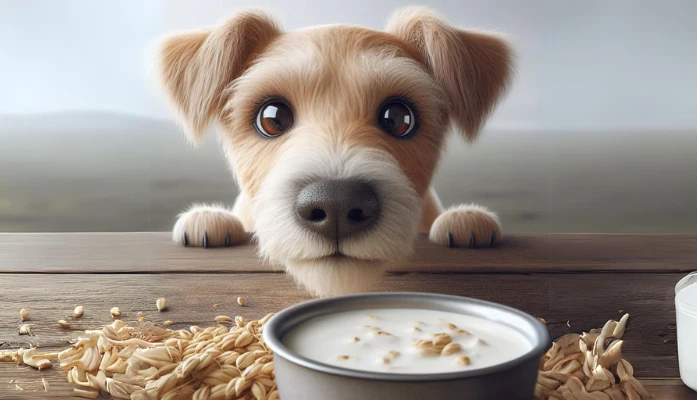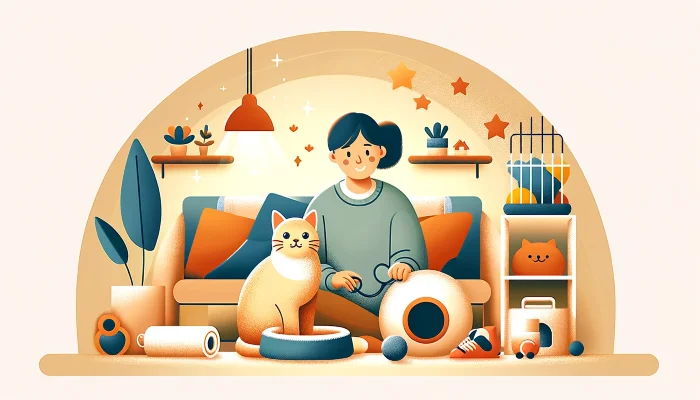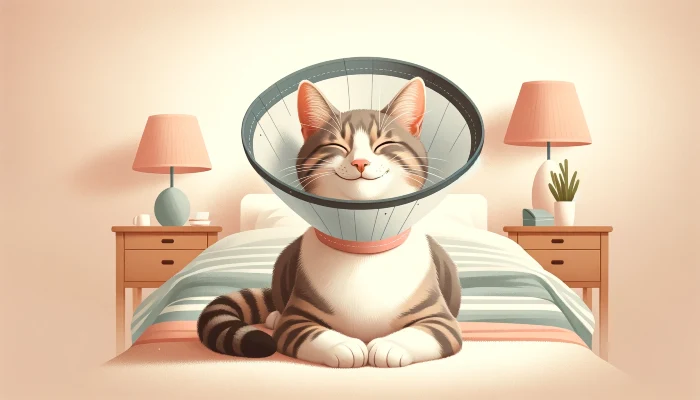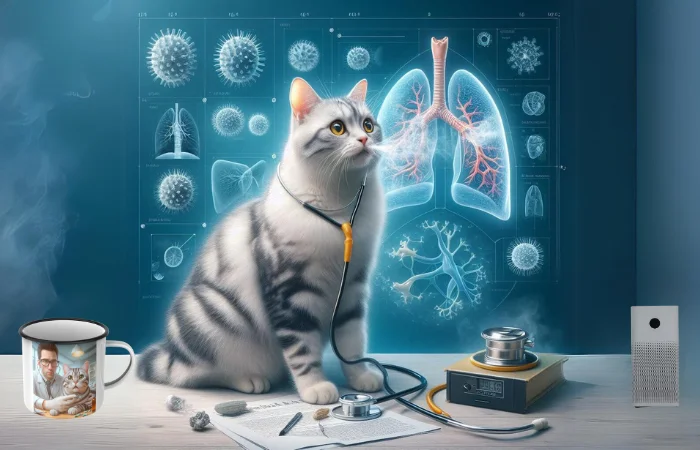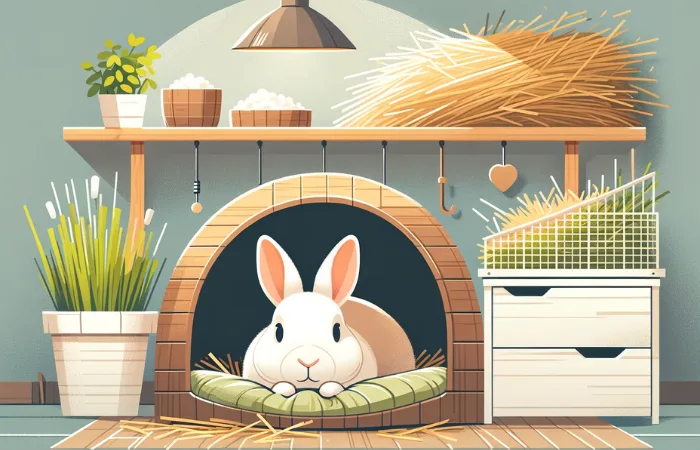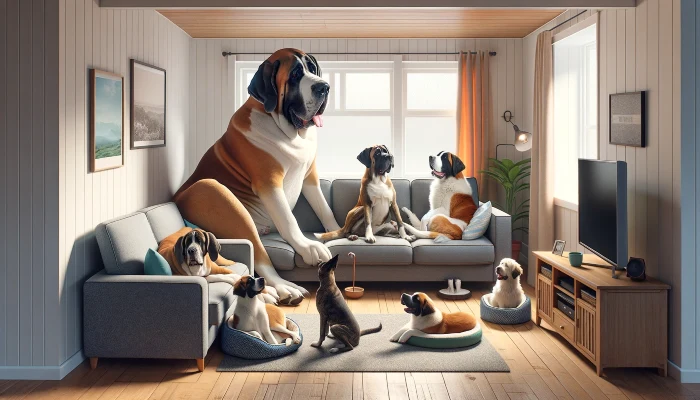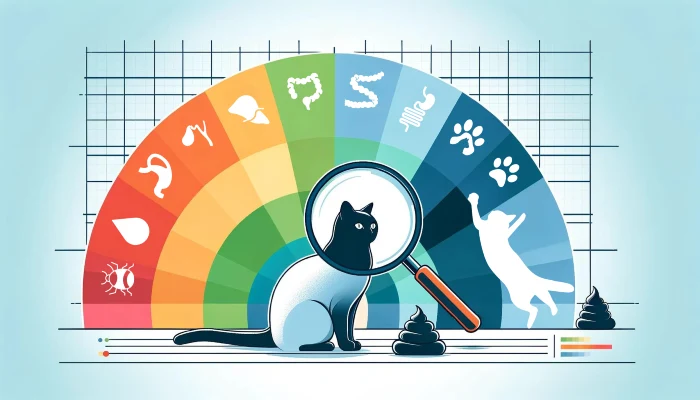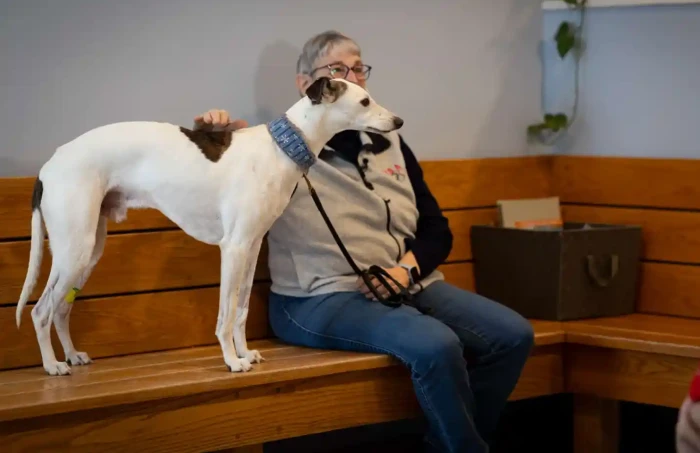In the vast world of feline care, few topics have garnered as much attention and concern as the increasing prevalence of obesity in our domesticated cats. For many cat owners, discerning the subtle shift from a well-fed cat to one facing the risks of being overweight is a challenge. But the ramifications of neglecting this vital aspect of feline health can be far-reaching, impacting not just the longevity but the quality of life of our cherished companions.
Welcome to the Ultimate Guide to Feline Obesity: The Heartfelt Journey to Your Cat’s Healthier Tomorrow. This guide aims to provide a comprehensive understanding of the multifaceted issue of cat obesity, drawing from the latest scientific research, expert opinions, and practical, actionable solutions.
From delving into the dangers of excessive weight to the nuances of human-cat feeding dynamics, this comprehensive guide seeks to be both an informative resource and a proactive guide. It’s designed for those who wish not only to understand the ‘what’ and ‘why’ of the issue, but also to equip themselves with the ‘how’ of addressing and preventing it.
Your commitment to reading this guide underscores the profound bond you share with your feline friend. It’s a testament to your dedication to ensuring that bond remains strong, healthy, and enduring. As you delve into the following sections (or chapters, if you prefer), may you be inspired, informed, and empowered to take proactive steps toward a healthier, more vibrant future for your cat.
Let’s embark on this journey together, championing the well-being of our feline family members and paving the way for many more years of shared memories and mutual affection.
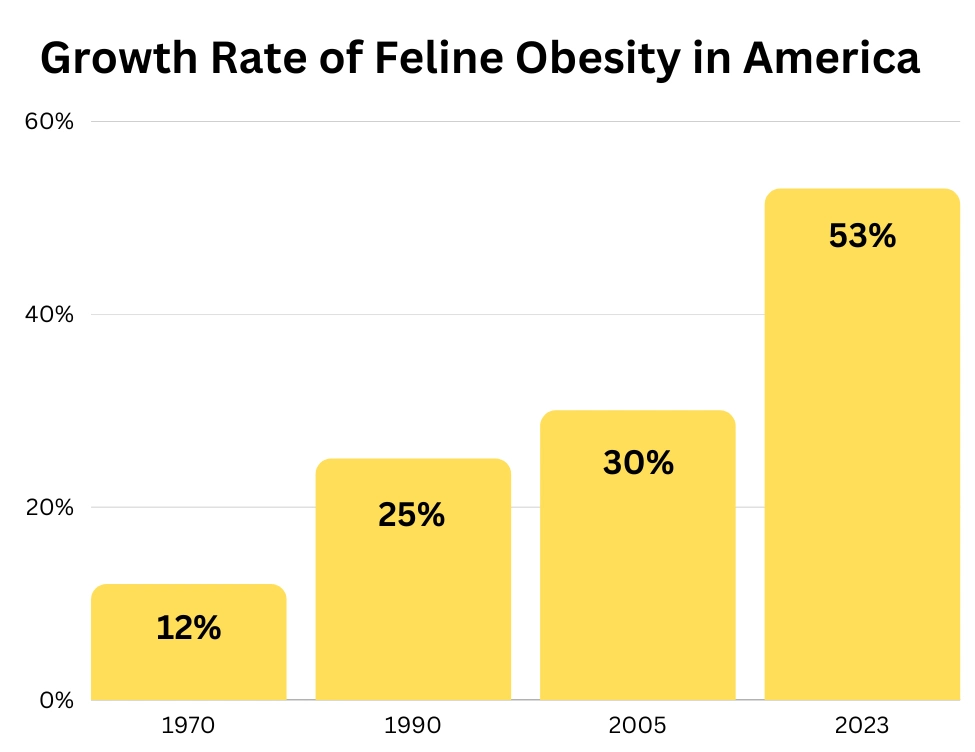
Understanding the Dangers of Feline Obesity: Comprehensive Insights
The issue of feline obesity is no longer just an emerging concern—it’s a clear and present danger. As modern living has ushered in a rise of indoor, sedentary lifestyles for many pets, the prevalence of obesity in cats has significantly increased. For those of us who view cats not just as pets, but as members of our families, understanding the intricacies and consequences of this health crisis is paramount. This chapter sets the stage for a comprehensive understanding of the obesity epidemic, starting with the immediate health implications of those added pounds.
The Health Implications of Excess Weight
Beyond the superficial appearance, carrying excess weight holds profound health implications for our feline companions. This weight isn’t just dormant tissue; it’s an active metabolic concern that can have cascading negative effects on a cat’s health.
Joint Stress and Arthritis
For a creature designed for agility, the ability to leap, climb, and pounce is inherent to a cat’s very nature. Cats’ skeletal structures, particularly their spines and joints, are specialized for these actions. An overweight cat is subject to significant stress on these joints. This not only predisposes them to arthritis but also impedes their natural movements. Unlike humans, who might experience joint pain as an inconvenience, for cats, it’s a direct impairment to their instinctual behaviors and quality of life.
Diabetes Mellitus
Obesity has been directly linked to the onset of diabetes in cats. Recent data suggest that overweight cats are up to four times more likely to develop diabetes than their healthier counterparts. This insulin-resistant state results in elevated blood sugar levels, with all the associated complications that can impact a cat’s daily life and longevity.
Respiratory Difficulties
Carrying extra fat, especially in the chest and abdominal regions, can make it challenging for cats to breathe efficiently. This is especially evident during moments of exertion, making tasks like climbing or even playful chasing laborious and taxing.
Decreased Lifespan
Perhaps one of the most alarming data points is the direct correlation between obesity and lifespan. Studies have revealed that obese cats may live up to 2.5 years less than cats maintained at an optimal weight. That’s a significant portion of their lives lost to the ramifications of obesity.
Other Health Concerns
While the above points are immediate and pressing, the health concerns related to obesity are vast. From an increased risk of liver disease, a compromised immune system, to even a heightened probability of certain cancers, obesity sets the stage for a myriad of health complications.
How Obesity Shortens Feline Life Expectancy
It’s a sobering reality that obesity is one of the primary culprits that can rob our feline friends of precious years. To fully appreciate the gravity of the situation, it’s crucial to understand the mechanisms by which obesity shortens a cat’s life. The cascading health effects not only impact their immediate well-being but also set the stage for long-term complications that can lead to premature aging and reduced lifespan.
Metabolic Stress: At its core, obesity alters a cat’s metabolic functioning. Excess fat leads to chronic inflammation, which places undue stress on the body. This consistent inflammation can strain vital organs, disrupt hormonal balance, and weaken the immune system, making the cat more susceptible to various diseases.
Heart and Circulatory Issues: The added weight increases the workload on the cat’s heart. Over time, this can lead to conditions like cardiomyopathy, a disease of the heart muscle, and other circulatory problems. These heart conditions can significantly affect a cat’s quality of life and may ultimately lead to heart failure.
Reduced Physical Activity: A vicious cycle ensues with obesity: as the cat gains weight, it becomes less active, leading to further weight gain. This lack of activity weakens muscle tone and overall physical health, leading to reduced stamina and resilience. Over time, such sedentary behavior can contribute to faster wear and tear on the body.
Compromised Immune System: As previously mentioned, chronic inflammation from obesity can weaken the immune system. A weakened immune system means the cat becomes more vulnerable to infections, diseases, and other health complications that a robust immune system might typically fend off.
Amplified Risk of Secondary Diseases: With obesity as a foundation, the risk for various secondary diseases increases manifold. Whether it’s liver disease, urinary tract complications, or specific forms of cancer, these conditions can drastically reduce a cat’s lifespan.
Impaired Natural Behaviors: A cat’s instinctual behaviors, such as hunting, playing, or climbing, are hindered by obesity. Over time, this can lead to mental stress and depression, affecting not just the physical but also the mental well-being of the cat.
When you aggregate these effects, it’s clear to see how obesity acts as a ticking clock, accelerating the aging process and paving the way for a host of health issues. Every extra pound a cat carries is a burden, not just in the present but echoing into their future, affecting the quantity and quality of their life.
The Domino Effect: Secondary Health Issues Linked to Obesity
When discussing feline obesity, the primary concerns—like joint stress and diabetes—are often at the forefront. However, these are just the tip of the iceberg. Obesity acts as a trigger, setting off a chain reaction of secondary health problems that can severely impact a cat’s overall well-being. Recognizing these potential issues can offer a clearer understanding of the intricate web that obesity weaves around a cat’s health.
- Liver Disease (Hepatic Lipidosis): One of the most common obesity-related liver diseases in cats is hepatic lipidosis, or fatty liver disease. When an obese cat loses weight too rapidly or stops eating, excess fat can accumulate in the liver, hindering its function. This can lead to a cascade of metabolic problems, some of which can be life-threatening.
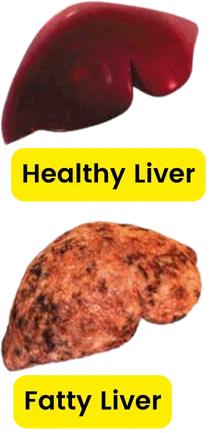
- Urinary Tract Issues: Obesity can increase the risk of lower urinary tract diseases in cats. These conditions can manifest as painful urination, blood in urine, or even blockages which, in severe cases, can be fatal if not promptly addressed.
-
- Gastrointestinal Disorders: Obesity can predispose cats to constipation and other gastrointestinal disturbances. A compromised gut can lead to reduced nutrient absorption, further complicating the health profile of the obese cat.
- Skin and Coat Problems: Overweight cats often struggle to groom themselves adequately, leading to skin infections, matting, and other coat-related issues. These complications can result in discomfort and can be a breeding ground for further infections.

-
- Increased Surgical and Anesthetic Risk: Should your cat need surgery for any reason, being overweight can elevate the risks associated with anesthesia and post-operative recovery. Their compromised physical state can lead to prolonged healing and increased susceptibility to post-surgical complications.
While the primary effects of obesity are concerning in themselves, these secondary issues compound the problem. They paint a picture of a life plagued by discomfort, pain, and reduced vitality—a far cry from the active, playful, and energetic nature inherent to cats.
Action List: Addressing the Impacts of Feline Obesity
- Regular Vet Check-ups: Ensure that your cat undergoes routine vet examinations. This can help in early detection of both primary and secondary health issues associated with obesity, increasing the chances of successful intervention.
- Tailored Diet Plan: Consult with a veterinarian to devise a diet plan that’s suitable for your cat’s unique needs. Ensure it provides all essential nutrients without excess calories.
- Increase Physical Activity: Gradually introduce play sessions that encourage movement. Consider toys that mimic hunting behaviors or interactive toys that stimulate both their mind and body.
- Monitor Water Intake and Urination: Regularly check your cat’s litter box for signs of increased urination or blood in the urine. Ensure they have constant access to fresh water to support kidney function.
- Skin and Coat Care: Groom your cat regularly, especially if they’re overweight and struggling to groom themselves. This can help prevent matting and identify skin issues early.
- Safe Weight Reduction: If your cat needs to lose weight, ensure it’s a gradual process. Rapid weight loss can lead to complications like hepatic lipidosis.
- Stay Educated: Continuously educate yourself about the health risks associated with feline obesity and stay updated with the latest research findings.
- Mental Stimulation: Engage your cat’s mind with puzzle toys or training sessions to combat potential depression or anxiety stemming from reduced activity.
- Avoid Overfeeding: Be mindful of portion sizes and try to avoid giving excessive treats. Consider using a measuring cup or a kitchen scale to ensure consistent feeding amounts.
- Join a Support Group: Connect with other cat owners, either online or locally, to share experiences, tips, and moral support. The journey to a healthier cat is always easier with a supportive community.
Thanks! We're sending your ebook with bonus recipes to your email right now!
Assessing Your Cat's Weight: Determining If Your Cat Is Overweight
A cat’s weight is not just a number on a scale; it’s a tangible reflection of their overall health, well-being, and potentially even their lifespan. In this chapter, we’ll delve into the methods and techniques to evaluate your cat’s weight accurately.
Whether you’re trying to ascertain if your beloved feline has added a few extra pounds or you’re keen on maintaining its current healthy state, these tools will be invaluable.
We’ll begin by discussing the visual and tactile signs you should be aware of, before progressing to more technical methods of assessment and then touching on the critical role of professional evaluations. By the end of this chapter, you’ll be well-equipped to assess your cat’s weight status with confidence and precision.
Identifying Visible and Tactile Signs
Cats come in a variety of breeds and sizes, making it essential to use more than just the eye test when evaluating weight. However, certain visual and tactile cues can offer primary insights into your cat’s physical condition.

Profile View: When observed from the side, a cat’s abdomen should tuck up slightly behind the ribcage, not hang down prominently. An overtly sagging belly, especially if it sways when the cat moves, could indicate extra weight.
Spine and Hip Bones: Similarly, you should be able to feel the spine and the base of the hip bones with light pressure. They shouldn’t be overly prominent, but if they’re buried under a layer of fat, it’s a concern.
Rib Test: Gently run your fingers along your cat’s ribcage. You should be able to feel the individual ribs without pressing too hard, but they shouldn’t be prominently protruding. If you’re pressing significantly to feel the ribs or can’t feel them at all due to a layer of fat, it’s a sign that your cat’s weight may not be optimal.

Overhead View: Looking at your cat from above, there should be a visible indentation or “waist” behind the ribs. If the waistline is straight or bulging outward, it suggests that your cat might be carrying excess weight.
Fat Pads: Some cats may develop noticeable fat pads, especially around the abdomen or at the base of the tail. These are palpable, soft deposits of fat that can further confirm overweight status.
While these signs are beneficial for a preliminary assessment, they’re just the beginning. The nuances of a cat’s weight, especially in multi-cat households or in breeds with varying standards, can sometimes be tricky to navigate. Therefore, combining these tactile and visual signs with more objective measures and professional assessments will ensure a comprehensive understanding of your cat’s weight status.
In the next section, we’ll move beyond these basic indicators to more in-depth techniques that can offer a clearer picture of where your feline friend stands in terms of its weight.
The Vet's Scale: What Do Those Numbers Really Mean?
Most cat owners have experienced that moment during a vet visit when their feline friend is placed on the scale, and a number flashes up. But what do those numbers truly signify in the context of your cat’s health?
Weight Ranges: Different cat breeds have different ideal weight ranges. For instance, a Siamese cat will typically weigh less than a Maine Coon. Knowing your cat’s breed and its corresponding ideal weight range can provide a foundational benchmark.
Weight Trends: A sudden increase or decrease in weight can be more concerning than the actual weight itself. Monitoring your cat’s weight over time can give insight into its overall health and any potential issues. Even a small weight loss in an obese cat, if too rapid, can be problematic.
Factors Affecting Weight: Age, activity level, metabolic rate, and neuter status can all play roles in determining a cat’s ideal weight. It’s essential to consider these factors rather than focus solely on breed averages.
The Importance of Muscle Mass: A number on the scale doesn’t distinguish between fat and muscle. Cats with a higher muscle mass might weigh more, but are not necessarily overweight. Discussing your cat’s physique and muscle tone with the vet can offer a clearer understanding.
Body Condition Scoring: A Hands-on Approach
Body Condition Scoring (BCS) is a standardized tool used by veterinarians to evaluate an animal’s body fat and overall physique. It provides a more nuanced view than just a number on the scale.
The Scoring System: BCS typically ranges from 1 to 9, with 1 being emaciated, 5 being ideal, and 9 being severely obese. The scores assess fat accumulation in various parts of the body and the visibility or palpability of certain bones.
Benefits of BCS: BCS allows for a consistent evaluation method that factors in the individual nuances of each cat, considering factors like bone structure and muscle mass. It’s particularly useful for breeds that naturally weigh more or less than the average domestic cat.
Conducting a BCS: While veterinarians are trained to provide accurate BCS, cat owners can also learn to do a basic evaluation at home. This involves assessing areas like the ribcage, spine, base of the tail, and the presence or absence of a waist when viewed from above.
Action List: Assessing Your Cat's Weight with Confidence
- Consistent Weigh-ins: Regularly weigh your cat, ideally at the same time of day and using the same scale. Document the weight to track any fluctuations over time.
- Educate Yourself on Breed Standards: Understand the ideal weight range for your cat’s specific breed. If you have a mixed breed, aim for an average based on known lineage or consult with your vet.
- Engage in Regular Vet Check-ups: Make routine vet visits a priority. They offer an opportunity for professional weight assessments and can flag any sudden weight changes.
- Learn Basic BCS Techniques: Familiarize yourself with the Body Condition Scoring system and practice conducting a basic assessment at home.
- Consider Muscle Tone: Focus not just on the weight, but also on the physical tone of your cat. A muscular cat might weigh more but isn’t necessarily overweight.
- Understand Weight Implications: Recognize the potential health implications of both underweight and overweight status. For example, understand that rapid weight loss, even in an obese cat, can be harmful.
- Ask Questions: If unsure or if something feels off, always consult with your veterinarian. They can provide insights tailored specifically to your cat’s unique profile.
- Stay Updated: As with all medical fields, veterinary medicine continues to evolve. Stay updated with the latest research and findings related to feline weight and health.
Laying the Groundwork: Proactive Measures for Cat Obesity Prevention
For cat owners, prevention is always better than cure. This principle holds exceptionally true when it comes to feline obesity. Ensuring your cat remains within a healthy weight range not only promotes their well-being but also averts potential health complications.
This chapter will guide you through the cornerstones of proactive obesity prevention, focusing on the integral role of nutrition, the essence of consistent and engaging activity, and the often-overlooked connection between neutering procedures and weight gain. By understanding and implementing these foundational strategies, you’ll be taking a significant step toward safeguarding your cat’s health and longevity.
The Role of Nutrition in Keeping Cats Lean
Nutrition is the linchpin of any weight management strategy, be it for humans or felines. A balanced diet tailored to a cat’s specific needs can significantly deter the onset of obesity and associated health issues.
Understanding Cat Nutrition Basics: Unlike humans and even some other pets, cats are obligate carnivores. This means their diet should predominantly consist of meat. Protein is a crucial macronutrient for them, aiding in muscle maintenance and overall vitality.
Reading Food Labels: Commercial cat food varies in quality. As a responsible owner, you should know how to read and interpret food labels. Look for foods where high-quality protein sources are listed as the primary ingredients. Be wary of foods high in fillers like corn and wheat, as they offer minimal nutritional value.
Portion Control: One of the main culprits of feline obesity is overfeeding. Cats don’t always self-regulate their food intake effectively. Use feeding guidelines as a starting point but adjust based on your cat’s age, activity level, and current weight.
Wet vs. Dry Food: Wet food can offer cats hydration alongside their meal, and is often higher in protein and lower in carbs than dry food. However, a mix can be beneficial. Discuss with your vet to determine the best dietary balance for your feline.
Treats and Snacks: While it’s tempting to indulge our pets with treats, they should only make up a small fraction of a cat’s daily caloric intake. Opt for healthy treat options and avoid feeding cats human food, especially those high in fat or salt.
Regular Dietary Evaluations: As cats age, their dietary needs can evolve. Regularly reviewing and possibly modifying their diet ensures it remains aligned with their current health status and nutritional requirements.
Through informed nutritional choices and vigilance, you can set the stage for your cat’s sustained well-being, keeping obesity at bay.
Activity and Play: Beyond the Laser Pointer
Engaging in regular play and stimulating activity is just as crucial for our cats as a balanced diet. Not only does it keep them physically active, helping to burn off calories, but it also provides mental stimulation, which is integral for their overall well-being.
Understanding Cat Play Behavior: It’s important to recognize that play for cats is often a reflection of their predatory instincts. Activities that mimic hunting — chasing, pouncing, and stalking — can be especially engaging for them.
Interactive Toys: Toys like feather wands, motorized butterflies, or ball tracks can captivate a cat’s attention for prolonged periods. They’re perfect for initiating those hunting-like behaviors.
Quick & Cheap DIY Toy Ideas:
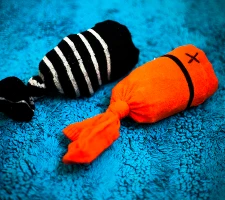
Sock Toys
Using a pair of old socks, stuff one of the socks into the other one and add a small amount of catnip and tie the open end into a knot. It becomes an instant toy that many cats adore.

Ping-Pong Balls
These lightweight balls are great for batting around and can keep a cat entertained for hours.
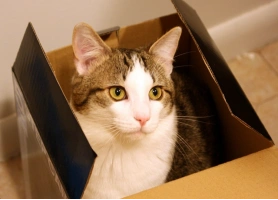
Cardboard Boxes
Never underestimate a cat’s love for boxes. They can serve as hiding spots, ambush points, or even scratching posts.
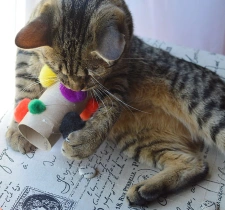
Toilet Paper Rolls
These can be turned into simple toys. Cut rings from them, and they become rollers, or fold in the ends to hide treats inside for a play-and-reward session.
Play Structures and Cat Trees: These are excellent for homes with limited space. Cats love to climb and perch on high points. A well-placed cat tree near a window can provide hours of entertainment, watching the outside world.
Scheduled Play Sessions: Like humans, cats can benefit from a routine. Try to allocate specific times each day dedicated to play. This ensures they get consistent activity and can also help reduce nocturnal restlessness.
Engage in Mutual Play: Don’t just rely on toys. Spend time playing with your cat. Tossing balls for them to chase or initiating hide-and-seek games can be both fun and bonding.
Outdoor Enclosures: For those who have the space and means, creating a secure outdoor enclosure can offer cats a change of environment. They can experience the outdoors safely, watching birds, insects, or just enjoying fresh air. You can find designs online to build your own catio, or you can check for premade ones as well.
Remember, the key to a successful play routine is variety. Changing toys or play methods can prevent boredom and keep your feline friend actively engaged.
Spaying, Neutering, and the Weight Connection
The decision to spay or neuter your cat is often linked to considerations about population control and behavioral improvements. However, many cat owners are unaware of the weight implications that come with these procedures. Gaining a comprehensive understanding of these implications helps in optimizing your cat’s health post-surgery.
Hormonal Changes: Both spaying and neutering involve the removal of reproductive organs, leading to a decrease in certain sex hormones. These hormonal shifts can reduce a cat’s metabolic rate, making them more susceptible to weight gain if their diet remains unchanged post-surgery.
Appetite Increase: Some cats may experience an increase in appetite after the procedure. This increased caloric intake, combined with a slower metabolism, can accelerate weight gain.
Benefits of Spaying and Neutering: Despite the potential weight implications, it’s important to know the numerous benefits of these procedures:
- Prevention of Unwanted Litters: A primary reason to spay or neuter is to prevent unplanned kittens, reducing the strain on animal shelters and rescues.
- Behavioral Benefits: Neutered males are less likely to spray, roam, or get into aggressive encounters. Spayed females won’t go into heat, preventing the associated vocalizations and behaviors.
- Health Advantages: Spaying and neutering can prevent specific health issues. Spaying before the first heat cycle reduces the risk of mammary tumors and development of uterine infections in females. Neutering can prevent testicular cancer in males.
Adjusting Diet Post-Surgery: Given the potential for weight gain post-surgery, cat owners should be proactive. Consulting with your vet about a suitable post-operative diet can ensure your cat gets the right nutrients without excess calories.
Continued Monitoring: Regular weight checks following the surgery can catch early signs of obesity, allowing for timely interventions.
The decision to spay or neuter, while beneficial in numerous ways, requires an informed approach to your cat’s diet and activity post-surgery to ensure their continued well-being.
Action List
- Review Your Cat’s Diet: Ensure you’re feeding high-quality, protein-rich foods. Limit treats and snacks to no more than 10% of daily caloric intake.
- Engage in Daily Play: Dedicate at least two 10-15 minute play sessions daily. Rotate toys to keep your cat’s interest alive.
- DIY Projects: Invest a weekend in creating some DIY toys, like sock toys or toilet paper rolls with a couple of healthy treats inside.
- Routine Vet Check-ups: Especially post neutering or spaying, regular vet visits can monitor weight and adjust diet accordingly.
- Stay Informed: Be aware of the hormonal and metabolic changes post-surgery. Knowledge is the first step to proactive care.
- Plan Outdoor Activities: If possible, create a secure outdoor space or enclosure. If not, window perches can offer a view of the outside world.
- Education: Share your knowledge about the importance of spaying/neutering and its weight implications with fellow cat owners.
Download The Free eBook & Grab 2 DIY Recipes!
Thanks! We're sending your ebook with bonus recipes to your email right now!
Feeding with Feelings: Stop Letting Your Relationship with Food Impact Your Cat
We often hear about emotional eating in humans, but rarely do we discuss how our emotions can impact the feeding habits of our pets. As cat owners, our bond with our feline friends is undeniable. However, it’s essential to recognize when our emotions and perceptions of love and care might be leading to overfeeding, potentially jeopardizing our cat’s health.
Emotional Overfeeding: The Human-Cat Dynamic
At the heart of the issue is the human tendency to project our feelings onto our pets. It’s easy to perceive food as a universal sign of affection, especially when our cats purr and show appreciation during feeding times.
Misreading Signals: Cats might meow or act hungry for numerous reasons, not just hunger. It could be boredom, a desire for attention, or even a learned behavior. Interpreting these signs as only hunger can lead to overfeeding.
The Comfort Connection: For some owners, feeding becomes a moment of connection and comfort, especially after a long day. The act of giving food can be soothing for the owner as much as the cat, but it’s vital to ensure it’s not excessive.
Breaking Free from Guilt-driven Treats: Recognizing and Addressing Emotion-driven Feeding Patterns
Cats quickly learn how to appeal to our emotions, especially when it results in extra treats or feedings. Whether they act extra cute, meow pitifully, or simply hover around their food bowl, it’s hard to resist. But understanding the motives behind our own actions can help break this cycle.
Guilt from Absence: Owners who are away from home frequently might overcompensate by providing extra food, associating it with love and care.
Responding to Appeals: Recognizing when your cat is genuinely hungry versus when they’ve learned to act a certain way for extra treats is crucial.
Finding Alternatives: Instead of using food as the primary reward, consider other forms of affection or play to strengthen your bond without impacting their diet.
Setting Boundaries: Love Isn't Always About the Food Bowl
A critical aspect of ensuring our cats remain healthy is setting boundaries when it comes to feeding.
Scheduled Feeding Times: Having set times for meals can help regulate your cat’s hunger and expectations. It also ensures they get the right amount of food.
Non-food Rewards: Praise, petting, or play can be just as rewarding for a cat as a treat. Introducing non-food rewards can help shift the association from love equals food to love equals attention and care.
Stick to Portion Guidelines: Always be aware of the recommended portion sizes for your cat’s age, weight, and activity level.
Ways Most of Us Humanize Cats and Why It’s Dangerous for Them
- Attributing Human Emotions:
- Example: Believing a cat is sad, lonely, or bored when left alone during the day.
- Danger: Overcompensating for perceived loneliness with excessive treats or food, leading to obesity or digestive issues.
- Misinterpreting Sleep Patterns:
- Example: Feeling guilty for working during the day, assuming the cat is awake and longing for company.
- Danger: Disrupting a cat’s natural sleep pattern by forcing interaction during their normal rest periods or overfeeding to compensate.
- Projecting Dietary Preferences:
- Example: Assuming cats will enjoy the foods, we like, or offering them human foods as treats.
- Danger: Many human foods are toxic to cats and offering them can lead to poisoning or digestive issues.
- Dressing Cats in Clothes:
- Example: Putting cats in outfits for aesthetic reasons or assuming they need them for warmth like humans might.
- Danger: Restricting movement, causing stress, or overheating a cat, which can be detrimental to their well-being.
- Over-relying on Vocal Communication:
- Example: Expecting cats to understand complex human language or verbal cues.
- Danger: Overlooking crucial non-verbal signs of stress, discomfort, or illness in cats and potentially delaying necessary care.
- Applying Human Social Constructs:
- Example: Expecting cats to enjoy large gatherings or parties because humans do.
- Danger: Exposing cats to overwhelming and stressful environments that can lead to behavioral issues or anxiety.
- Human Time Perception:
- Example: Believing cats have a sense of time like humans and feel abandoned when left alone for extended periods.
- Danger: Overcompensation with attention or treats, or making unnecessary changes to their environment, disrupting their routine and comfort.
Understanding and respecting the inherent differences between human and feline needs, behaviors, and perceptions are crucial for a harmonious and healthy coexistence.
Action List
- Awareness of Emotional Triggers: Recognize when you’re feeding your cat based on your emotions, such as guilt or loneliness, rather than their needs.
- Track Feeding Patterns: Maintain a journal of feeding times, amounts, and reasons to identify patterns of overfeeding or emotion-driven feeding.
- Introduce Non-Food Rewards: Use toys, games, or bonding sessions as alternative rewards to strengthen your relationship without resorting to treats.
- Establish a Feeding Schedule: Set regular feeding times to manage both your and your cat’s expectations, ensuring a balanced diet.
- Educate Yourself on Human Foods: Understand which human foods are toxic or harmful to cats to avoid accidental poisoning or health complications.
- Respect Feline Nature: Avoid projecting human emotions or behaviors onto your cat. Recognize their unique needs and patterns, such as their sleep cycles.
- Avoid Dressing Your Cat: Unless there’s a medical reason, avoid putting your cat in outfits, as it may cause them discomfort or stress.
- Educate and Share: Engage in discussions with other cat owners about the risks of humanizing pets and the importance of understanding feline-specific behaviors.
- Consultation: If you’re ever unsure about your cat’s dietary needs, portion sizes, or behavioral changes, consult with a veterinarian.
- Stay Informed: Continuously educate yourself about feline behavior and needs to ensure you’re providing the best environment and care for your cat.
Balancing Nature and Nourishment: Comprehensive Natural Strategies for Feline Weight Management
In the world of feline health, nutrition stands as a cornerstone. What our cats consume, how they hydrate, and the natural remedies we might consider are all pivotal in ensuring their optimal weight and health.
This chapter delves into the intertwining elements of diet, water, and the potential effects of these choices, offering a thorough look into the essence of what ‘natural’ truly means when managing your cat’s weight. We’ll also explore herbal solutions, showcasing their benefits and cautions, and navigate the maze of natural supplements, ensuring that you’re well-equipped to make the best decisions for your feline friend.
Whether you’re reconsidering your cat’s daily diet or seeking natural remedies to complement their lifestyle, this chapter serves as your comprehensive guide to nature-aligned feline nourishment.
Dietary Changes, Water Intake, and Potential Side Effects
High-Protein, Low-Carb Diets
Cats are obligate carnivores by nature. This means that their evolutionary diet consists primarily of meat. Domestication and commercial cat foods have sometimes moved them away from this natural diet, introducing more carbohydrates than they’re evolved to consume.
- Why It Matters: A diet high in carbs can lead to weight gain in cats. Their bodies are designed to derive energy from proteins and fats, not carbohydrates. Excess carbs can be stored as fat, contributing to obesity.
- The Shift: Transitioning your cat to a high-protein, low-carb diet can mimic their natural eating habits more closely. This shift can help in weight management and cater to their metabolic needs. Look for commercial cat foods that list a protein (like chicken, fish, or beef) as the first ingredient and have minimal fillers.
Healthy Fats for Felines
Just as with humans, not all fats are bad. In fact, certain fats are crucial for your cat’s health.
- Omega-3 Fatty Acids: These essential fats, often found in fish oils, not only help maintain a glossy coat but also support brain health and can help control inflammation in the body. Incorporating a source of omega-3 into your cat’s diet can be beneficial for weight management and overall health.
- Balancing the Diet: While healthy fats are essential, they’re also calorie dense. Ensure you’re providing the right amount by consulting with your veterinarian or a feline nutritionist.
The Importance of Hydration
Cats, especially those on dry food diets, often don’t drink as much water as they should. Proper hydration plays a vital role in metabolism, digestion, and overall health.
- Encouraging Water Intake: To promote more drinking, consider investing in a cat water fountain, which many cats find more appealing than a stagnant bowl. Additionally, including wet food in their diet can increase their overall water intake.
- Signs of Dehydration: A dehydrated cat might have dry gums, sunken eyes, and reduced elasticity of the skin. If you suspect dehydration, seek veterinary advice immediately.
Potential Side Effects of Dietary Changes
While transitioning to a natural diet can offer numerous benefits, it’s crucial to be aware of potential challenges or side effects.
- Transition Gradually: A sudden shift in diet can cause digestive issues in cats, from diarrhea to constipation. It’s recommended to make dietary changes gradually, mixing increasing amounts of the new food with the old over a week or so.
- Monitor for Allergies: Some cats might be allergic or sensitive to certain natural ingredients. Watch for signs such as itching, swelling, or digestive troubles.
- Seek Professional Guidance: Always consult with a veterinarian or feline nutritionist before making significant changes to your cat’s diet. They can provide guidance tailored to your cat’s specific needs and conditions.
Herbal Solutions and Their Benefits
Nature offers an array of herbs and plants known for their therapeutic benefits. For cats, certain herbs can potentially aid weight management:
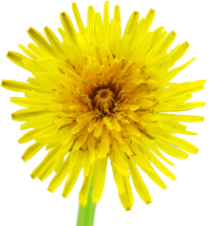
Dandelion
Often considered a weed in our gardens, dandelion has diuretic properties, which can help reduce excess water weight in cats. Its root also supports liver function, a critical organ in fat metabolism.

Chickweed
Used traditionally to soothe digestive ailments, chickweed may help reduce fatty deposits and has a mild diuretic effect.

Burdock Root
This herb supports detoxification processes in the body, promoting better digestion and metabolism.

Psyllium Husk
A natural source of fiber, psyllium can help cats feel fuller, reducing their caloric intake, and aiding in digestion.
Please remember that while herbs can offer benefits, they should be introduced gradually and under the guidance of a vet or a pet herbalist to ensure they’re safe and effective.
Integrating Natural Supplements: Dos and Don'ts
As with any treatment, there are right and wrong ways to integrate natural supplements into your cat’s regimen:
- Do consult with a veterinarian before introducing any new supplement.
- Don't assume that all-natural or herbal means safe. Some natural substances can be toxic to cats.
- Do research the source of your supplements. Ensure they are free from pesticides, contaminants, and are formulated specifically for pets.
- Don't give supplements intended for humans to cats unless explicitly instructed by a veterinarian. Dosages and formulations might differ.
- Do monitor your cat for any adverse reactions when starting a new supplement.
Action List: Comprehensive Strategies for Natural Feline Weight Management
Reassess Your Cat’s Diet
- Shift to high-protein, low-carb foods that replicate a cat’s natural diet.
- Ensure the first ingredient in commercial cat foods is a primary protein source like chicken, fish, or beef.
- Limit fillers and unnecessary additives.
Boost Hydration Levels
- If using dry food, consider integrating wet food to increase water intake.
- Think about investing in a cat water fountain to encourage drinking.
- Monitor your cat for signs of dehydration, such as dry gums or sunken eyes.
Educate Yourself on Herbal Solutions
- Research the benefits of specific herbs before introducing them.
- Always start with small doses to observe any reactions or sensitivities.
Approach Supplements with Caution
- Consult with a vet or feline nutritionist before introducing any new supplements.
- Always adhere to recommended dosages and be vigilant about potential interactions with other medications or foods.
Implement Best Practices for Feeding for Weight Loss
- Feed in Portions: Use a measuring cup to ensure you’re providing the recommended amount.
- Schedule Feeding Times: Avoid free feeding; instead, establish specific feeding times to regulate intake.
- Limit Treats: Treats should make up no more than 10% of your cat’s daily caloric intake.
- Introduce Slow-Feeder Bowls: These can help cats eat more slowly and feel full using less food.
- Monitor Weight Regularly: Weekly or bi-weekly weigh-ins can help track progress and make necessary adjustments. You can use your digital bathroom scale to weigh your cat, just weigh yourself first and jot down your weight and then pick up your cat and stand on the scale again, and jot down that number and subtract your weight from your combined weight and that will give you your cats weight.
Remember, every cat is unique. What works for one might not work for another. Always prioritize your cat’s well-being and consult professionals when in doubt. Making informed and thoughtful decisions will pave the way for a healthier, happier life for your feline companion.
Optimal Feline Health: Putting It Together & Nutrition
Food plays an integral role in our lives, and for our feline companions, it’s no different. Too much food and too many treats can significantly impact their health, happiness, and longevity. With obesity being a leading concern for many cat owners, the desire to provide wholesome and balanced nutrition has never been higher.
We’ll emphasize the importance of portion control, a crucial element often overlooked!
Emphasizing Portion Control in Daily Feeding
While the quality of food matters immensely, the quantity is equally critical. Portion control is an essential component of weight management. Understanding your cat’s caloric needs based on their age, weight, activity level, and health conditions is vital. Typically, the average indoor cat requires about 20 calories per pound of body weight to maintain their current size. However, these requirements might differ based on individual needs.
For cats on a weight loss journey, it’s essential to reduce their caloric intake gradually. Rapid weight loss can be harmful. Consult your vet to establish a safe caloric intake for your cat’s unique situation.
Action List
-
- Research First: Understand your cat’s specific dietary needs based on their age, weight, and health conditions.
- Quality Over Quantity: Prioritize high-quality, cat-safe ingredients when making homemade treats. Learn more in our free eBook!
- Master Portion Control: Familiarize yourself with your cat’s caloric needs and use a measuring cup or scale to ensure accurate servings.
- Consult a Veterinarian: Always discuss significant dietary changes (or new recipes) with your veterinarian to ensure they align with your cat’s specific needs.
- Be Observant: Monitor your cat’s reaction to new foods and treats, watching for signs of allergies or intolerances.
Download The Free eBook & Grab 2 DIY Recipes!
Thanks! We're sending your ebook with bonus recipes to your email right now!
Conclusion: The Heartfelt Commitment to Your Cat's Wellness
Every loving cat owner wishes for their feline friend to lead a life filled with vibrant energy, playful days, and nights of serene purring. At the heart of this aspiration is the realization that, like humans, the well-being of our cats is intricately linked to their health and nutrition. Feline obesity is more than just a matter of aesthetics or numbers on a scale; it’s about quality of life, longevity, and the many joys our cats bring into our world each day.
You embarked on this journey with a desire to understand, act, and ultimately transform your cat’s health. Through the pages of this guide, you’ve unraveled the intricacies of feline obesity, discovered the means to assess and address it, and gained a treasure trove of actionable insights to implement. But knowledge, though powerful, is only the beginning. True transformation emerges from consistent, informed actions.
If there’s one thing to remember, it’s that change doesn’t happen overnight. Like any significant endeavor, it requires commitment, patience, and unwavering love. Celebrate the small victories, learn from the setbacks, and always keep your cat’s best interest at the forefront.
More To Discover
- Pet Health Issues You Shouldn’t Ignore: Prevention is Better (and Cheaper) Than a Cure
- Cats at Their Healthiest: Essential Vaccines, Their Benefits, and Average Costs Explained
- Male vs Female Cat? Key Differences & Personality Explained
- Cat First Aid: Essential Tips and Techniques Every Cat Owner Should Know
Key Takeaways from This Ultimate Guide:
-
- Understanding the Risks: Grasp the depth of health implications associated with feline obesity, from joint stress to diminished life expectancy.
- Assess Accurately: Recognize the signs of an overweight cat using tactile methods, vet scales, and body condition scoring.
- Prevention is Paramount: Emphasize proactive measures such as proper nutrition, increased activity, and understanding the weight implications of spaying and neutering.
- Emotional Feeding: Identify and combat the human tendencies that lead to overfeeding, including emotional and guilt-driven patterns.
- Natural Strategies: Dive deep into dietary changes, water intake, and safe supplements to aid weight management.
In the end, our cats depend on us. They rely on us for love, care, and, most importantly, their health. With the knowledge and tools you now possess, you’re more than equipped to ensure your feline companion thrives.
Remember, the journey to a healthier tomorrow starts with the steps you take today. Here’s to brighter, healthier days filled with playful chases, contented purrs, and the unparalleled bond between you and your cat. Let’s make every moment count!











